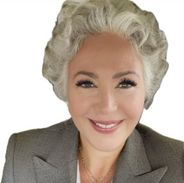Crafting a Compelling Cover Letter: Tips for Every Job Seeker
You might wonder if cover letters are even relevant in a world of online applications, instant messaging, and digital portfolios. The answer is a resounding yes. A cover letter is more than a formality; it’s your opportunity to communicate why you’re the perfect fit for a role beyond what’s in your resume. It’s your chance to introduce yourself as a professional with unique experiences and aspirations that align with the company’s goals.
For every job seeker, crafting a compelling cover letter can open doors to interviews, connections, and opportunities that might be overlooked. Here are practical, emotionally intelligent tips to help create a stand-out cover letter.
1. Begin with Authenticity and Enthusiasm
Starting your cover letter with a genuine interest in the company or role sets a positive tone. Employers want to know why you’re excited about their organization, so do some research. Consider what draws you to the company and its mission, products, or culture, and share that in your opening lines.
For instance, instead of starting with a generic “I’m writing to apply for the position of…,” try:
“I was thrilled to see an opportunity with [Company’s Name] because your commitment to [specific value or project] resonates with my passion for [related field or cause]. I am excited to bring my skills in [relevant skill] to your team and contribute to [specific goal or project].”
2. Showcase Your Unique Value
A cover letter isn’t about repeating your resume but adding context to your experiences. Consider it a bridge between your qualifications and the company’s needs. Describe a few standout accomplishments and how they’ve prepared you for this role. Use numbers, statistics, or other results-based language to convey your impact.
For example:
“In my previous role as a project manager, I spearheaded a team that increased productivity by 30% over six months through streamlined workflows and enhanced communication. I’m excited to apply this experience in a forward-thinking environment like [Company’s Name] and help your team reach similar successes.”
This approach connects your achievements with their goals, showing how your unique strengths make you an asset.
3. Demonstrate Empathy by Addressing Their Needs
The best cover letters reveal an understanding of the company’s challenges or goals. A well-crafted letter reflects empathy by showing you’ve thought about their needs, not just your own. Start by identifying key responsibilities or problems they’re trying to solve, which you can find in the job description or company mission.
Try a statement like:
“I understand that [Company’s Name] strives to improve customer engagement through innovative solutions. With over five years of experience in customer-centered design, I’ve developed strategies that increased customer retention by 20%, and I would love to bring similar results to your team.”
This signals that you’re thinking about actively contributing to the company’s success.
4. Use Storytelling to Highlight Your Skills
Stories create connection and memorability. Instead of listing your qualifications, choose one or two experiences that exemplify your skills in action. Frame these as mini-stories that depict your problem-solving abilities, leadership, or adaptability.
For example:
“One of my proudest moments was leading a cross-functional team to deliver a major project ahead of schedule. Despite unforeseen challenges, I motivated the team by fostering a culture of open communication, and we successfully launched a product that became one of our best sellers. This experience would enable me to contribute effectively as a team lead at [Company’s Name].”
Stories are more engaging than bullet points, showing who you are as a person, not just a job candidate.
5. Keep the Tone Professional yet Personal
The cover letter is your chance to let your personality come through. While maintaining a professional tone, don’t be afraid to use approachable, conversational language. You want to sound like a natural person genuinely interested in the role—not just a list of qualifications.
A great way to strike this balance is to write how you’d speak in a relaxed, face-to-face conversation with the hiring manager. For example:
“I’ve always been drawn to roles that let me combine creativity with technical expertise, and I’m inspired by [Company’s Name]’s innovative approach to [specific industry or product]. I’d love to bring my background in [relevant experience] to your team and work together to push boundaries.”
This tone keeps it honest and personable while maintaining a professional polish.
6. End with a Call to Action and Gratitude
Close your cover letter with a warm expression of gratitude and a call to action. Thank the reader for their time and express your enthusiasm for the opportunity to discuss how you can contribute to their team.
For instance:
“Thank you for considering my application. I am eager to explore how my background in [specific skill or field] can contribute to [Company’s Name]’s goals. I look forward to connecting and discussing how my experiences align with your team’s vision.”
This ending reinforces your interest and clarifies that you’re looking forward to further conversation, leaving a positive final impression.
7. Edit with Care and Precision
A powerful cover letter is thoughtful and meticulously polished. After writing your draft, read it aloud to catch any awkward phrasing or typos. Be mindful of length; a cover letter should be succinct—usually no longer than a page. Lastly, consider asking a friend or mentor to review it, providing feedback on tone and clarity.
Elizabeth Ruiz: Strategic Communication and Leadership Expert

Elizabeth Ruiz is a seasoned strategic communication and leadership expert, passionately dedicated to exploring how ethical leadership, psychology, and communication drive organizational success. With a career rooted in applying advanced leadership theories, Elizabeth’s work in management consulting, strategic HR, and organizational effectiveness helps corporate, governmental, and nonprofit organizations transform their management practices. When she isn’t teaching or studying as a student, she writes extensively on topics such as strategy, management, and the psychology of effective leadership.
Elizabeth’s approach is defined by her unwavering belief that true leaders are lifelong learners. Connect with Elizabeth on LinkedIn.
